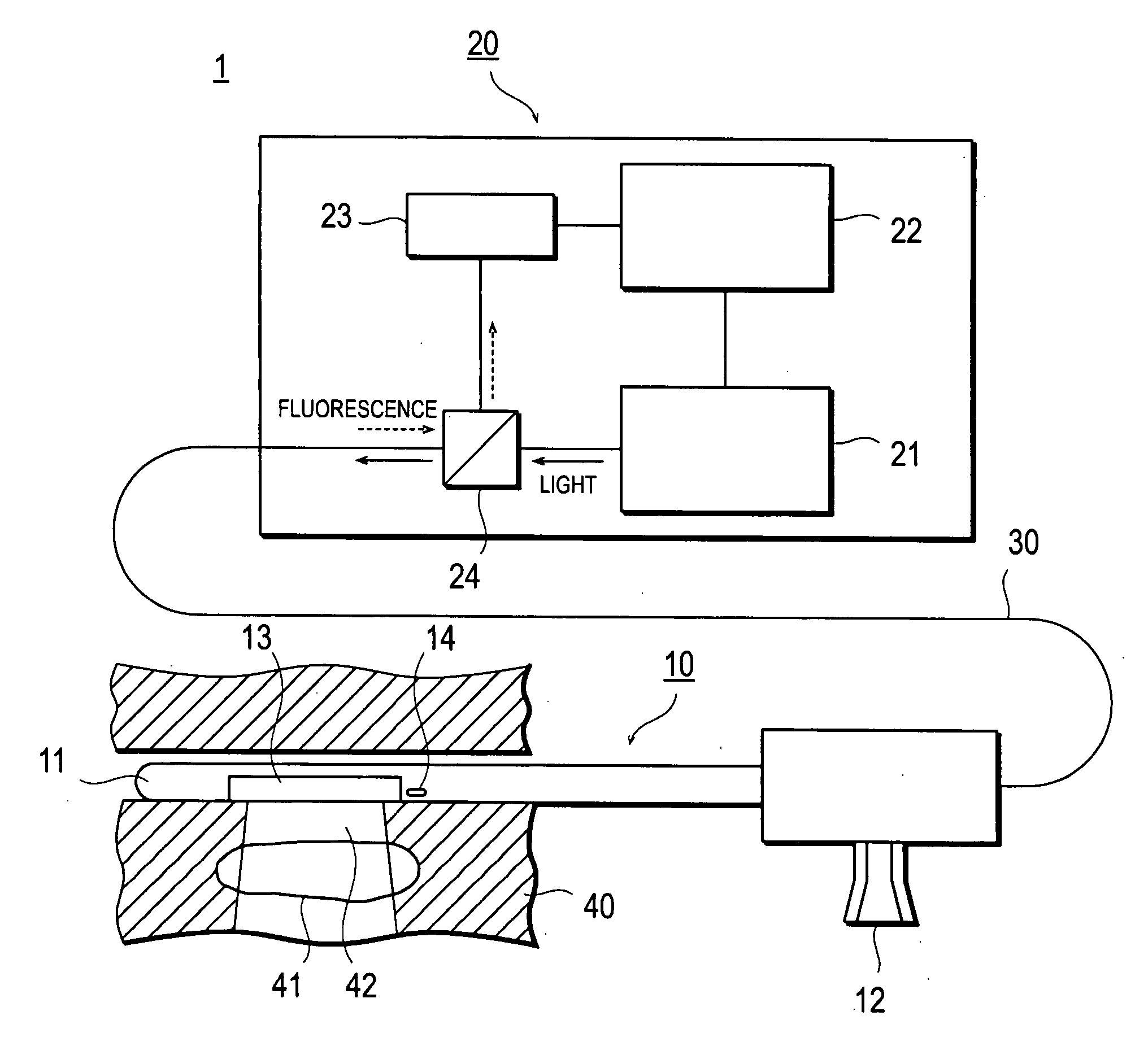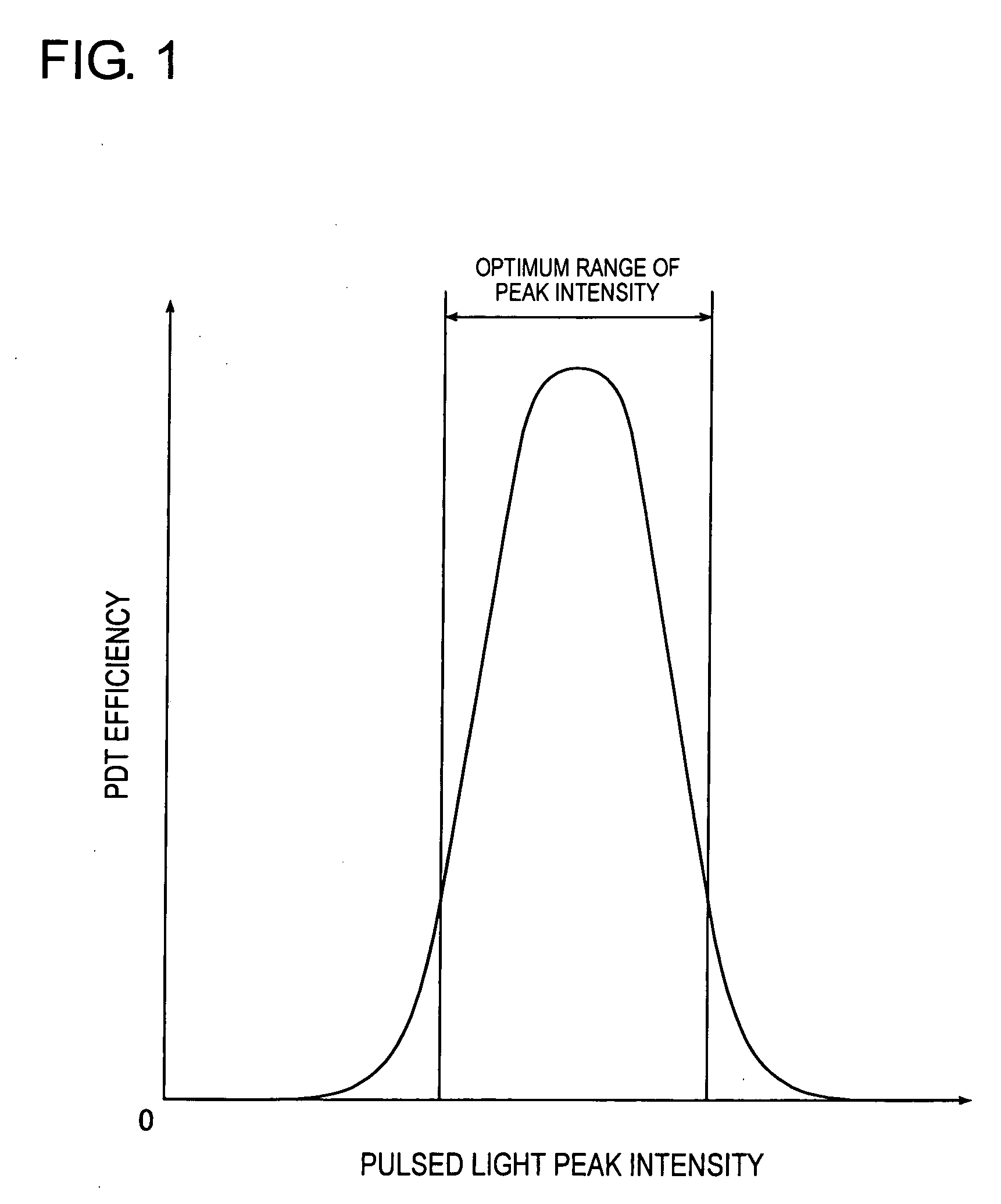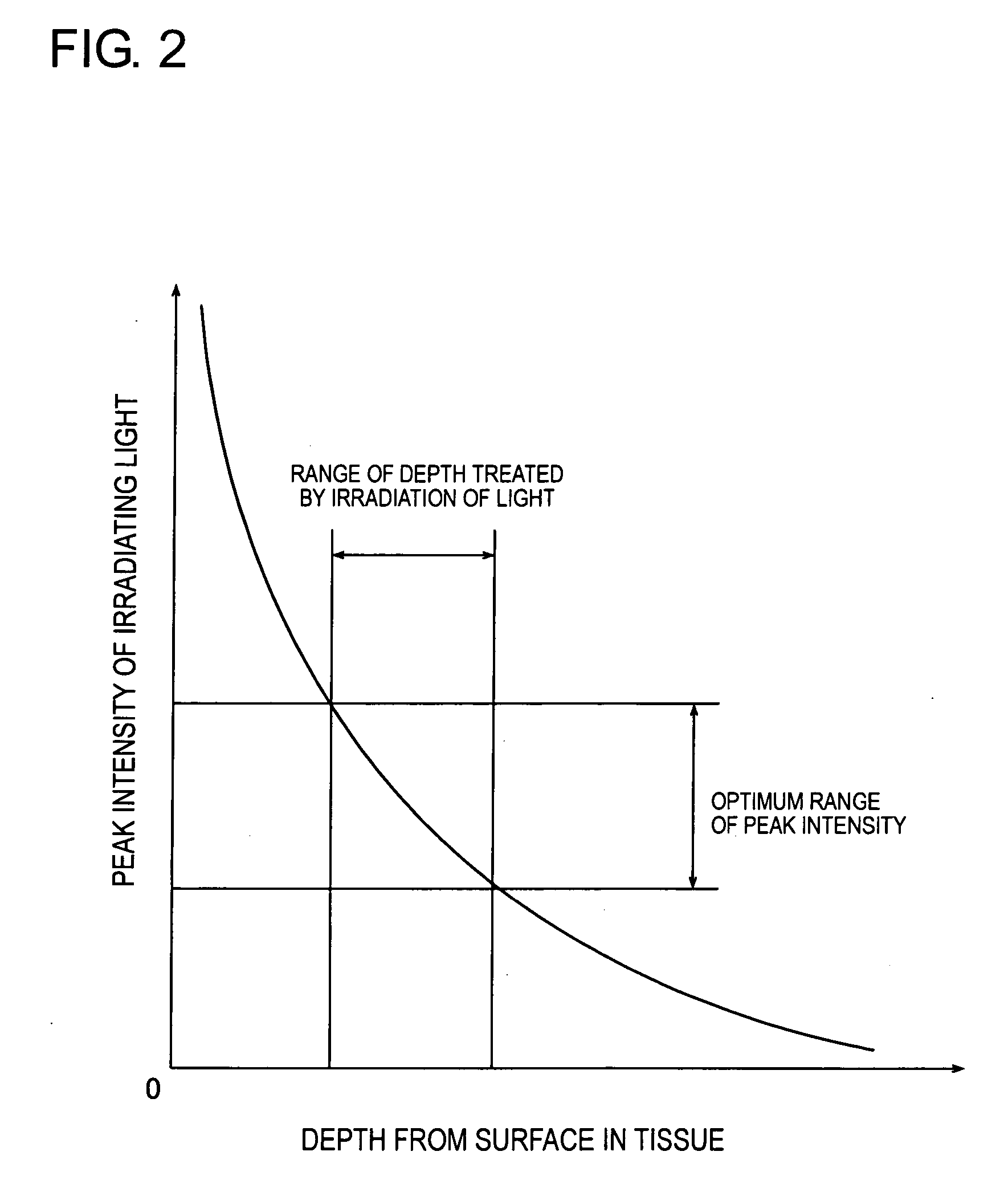Photodynamic therapy equipment, method for controlling photodynamic therapy equipment and method of photodynamic method
- Summary
- Abstract
- Description
- Claims
- Application Information
AI Technical Summary
Benefits of technology
Problems solved by technology
Method used
Image
Examples
example 1
Control of Treatment Depth on Light Irradiation Condition Using Arteriosclerotic Athero Model
[0136]FIG. 7 is a graphical representation showing peak intensity and repetition frequency dependency of PDT effect. FIG. 8 is a graphical representation showing relationship between drug breaching and peak intensity. FIG. 9 is a graphical representation showing changes of rate of cell death when irradiation energy is changed.
[0137] In a treatment for attempting reduction of arteriosclerotic stenosed volume and maintaining perfusion blood flow rate, a method for controlling treatment depth by changing the light irradiation condition (peak intensity and frequency) for treating inside of athero alone and prevent damage of penumbral tissue was examined.
[0138] With regard to arteriosclerotic athero model, mouse derived macrophage like cell J774.1 was used. PDT was performed after contacting with the second generation photosensitive substance ATX-S10 (ATX-S10 Na(II) (K.K. Hikari Chemical Lab....
example 2
Control of Superficial Part Preservation Range 1
[0147]FIG. 10 is a graphical representation showing measurement result of rate of cell death to depth in each pulse energy density when pulse number is maintained constant.
[0148] In example 2, a rate of cell death on various depth with different pulse energy density under constant pulse number of irradiating light was measured.
[0149] 10,000 pulses were irradiated under the condition of pulse energy density ranging from 0.3 mJ / cm2 to 9.5 mJ / cm2, with constant pulse width and repetition frequency of the irradiated pulsed light. The rate of cell death on the depth was measured. Result is shown in FIG. 10.
[0150] In the low pulse energy density at the range from 0.3 mJ / cm2 to 1.5 mJ / cm2, the rate of cell death was attenuated almost uniformly from the irradiated surface to the depth. Contrary to that, in the irradiation at pulse energy density 2.5 mJ / cm2 or more, significantly low range of rate of cell death was remained in the superfic...
example 3
Control of Superficial Part Preservation Range 2
[0154]FIG. 11 is a graphical representation showing measurement result of rate of cell death to depth when amount of total irradiating energy is maintained constant.
[0155] In example 3, the rate of cell death to depth in each different pulse energy density with maintaining the total irradiation energy of irradiating light to be constant was measured.
[0156] Referring to the above example 2, an example of the superficial preservation treatment, when amount of the total irradiation energy is to be constant, is shown.
[0157] Irradiation was continued until the total amount of irradiation energy is reached to 40 J under the condition of pulse energy density ranging from 2 mJ / cm2 to 9.5 mJ / cm2, i.e. the range to form the superficial preservation range, with constant pulse width and repetition frequency of the irradiated pulsed light. The rate of cell death on the depth was measured. Result is shown in FIG. 11.
[0158] High rate of cell de...
PUM
 Login to View More
Login to View More Abstract
Description
Claims
Application Information
 Login to View More
Login to View More - R&D
- Intellectual Property
- Life Sciences
- Materials
- Tech Scout
- Unparalleled Data Quality
- Higher Quality Content
- 60% Fewer Hallucinations
Browse by: Latest US Patents, China's latest patents, Technical Efficacy Thesaurus, Application Domain, Technology Topic, Popular Technical Reports.
© 2025 PatSnap. All rights reserved.Legal|Privacy policy|Modern Slavery Act Transparency Statement|Sitemap|About US| Contact US: help@patsnap.com



